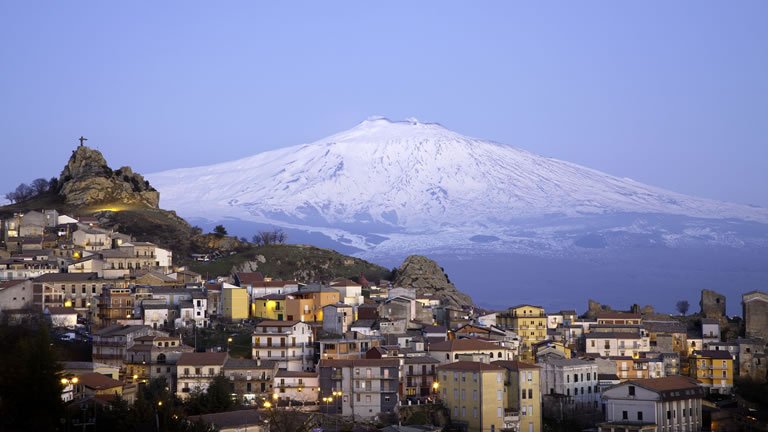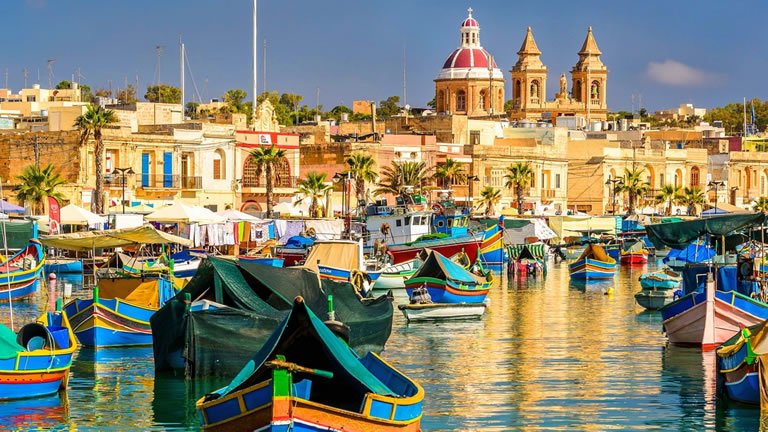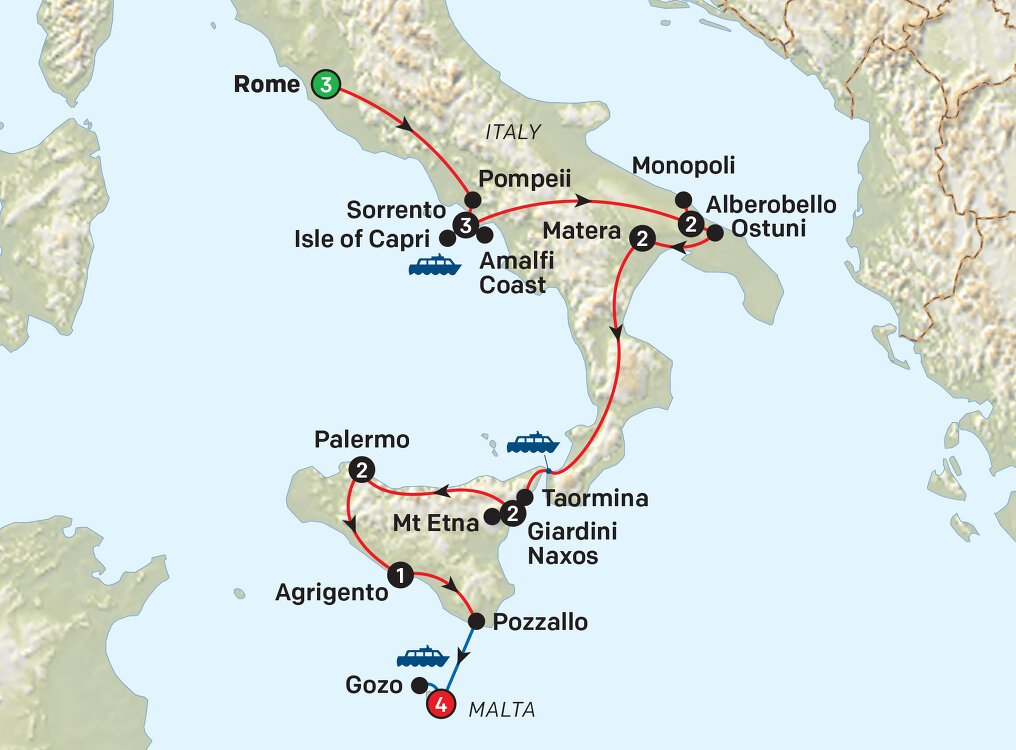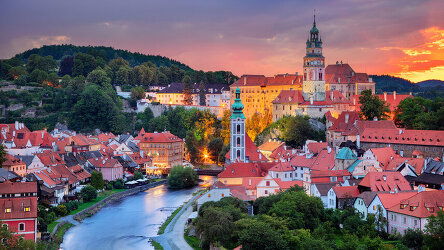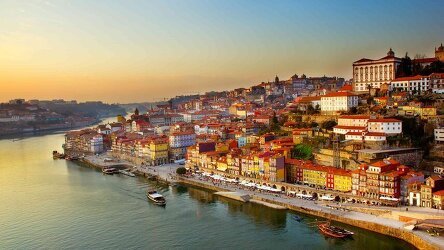Overview
Itinerary
Welcome to Italy and to the famed city of the Roman Empire, the Seven Hills, ‘La Dolce Vita', the Vatican City and ‘Three Coins in the Fountain'!
Italy is a diverse country with something for everyone. Ancient ruins lie next to modern buildings and cobblestone alleyways next to busy streets. Home of pizza, pasta, olive oil, and wine, Italy is known as a food lover's paradise. Fashion lovers from all over the world also flock to Italy for the latest clothing, shoes, and handbag designs.
Rome, with its wonderful palaces, churches, grand romantic ruins, opulent monuments, ornate statues and graceful fountains, has an immensely rich historical heritage and cosmopolitan atmosphere, making it one of the world's most visited, famous, influential and beautiful capitals.
We don’t want you to miss out on any aspect of your small group tour. To ensure that you don’t, we recommend you arrive at your hotel by 5.00pm.
Meet your fellow travellers and Tour Director this evening for a welcome drink at the hotel.
Today we explore Imperial Rome by foot, visiting the Roman Forum, Piazza Venezia, the Capitol, the Imperial Palace and lastly, the Colosseum. The Colosseum is one of the most famous sites in Rome and was the largest amphitheatre built in the Roman Empire. Capable of seating 50,000 spectators, the Colosseum was used for gladiatorial contests and public spectacles, including mock sea battles, animal hunts, executions, re-enactments of famous battles, and dramas based on classical mythology.
The afternoon is free for you to further explore, before making your own way back to the hotel in time for a group welcome dinner this evening.
Challenging Day: Today is a particularly challenging day, where there will be extended periods of walking time, often across uneven ground and in areas of high altitude or heat and humidity.
We discover the majestic Vatican City today, the world's smallest sovereign state situated entirely within the city of Rome, spread over a hill west of the River Tiber. Vatican City is regarded as a non-commercial economy as it has no major imports or exports and is administered by the Pope and the Pontifical Commission. Most notably, it is the centre of the Roman Catholic Church worldwide organisation and is home to the famous Sistine Chapel and incredible museums, St Peter's Square, St Peter's Basilica and the Vatican Garden.
We'll visit the amazing museum with its collection of artworks and artefacts, the Sistine Chapel and St Peter's Basilica on our tour. The Sistine Chapel is most famous for the painted ceiling by Michelangelo which was commissioned by Pope Julius II and took 4 years to complete (1508-1512). Other famous works include 'The Last Judgement' and the side walls covered in Renaissance frescoes depicting important biblical scenes.
St Peter's Basilica (one of the largest basilicas of Christianity) stands on the site where Peter, the apostle who was considered to be the first Pope, was crucified and buried. St Peter's Square is directly in front of the Basilica and is surrounded by a colonnade of 284 columns. Every Sunday at noon devotees gather to receive a blessing from the Pope from his window.
After our tour finishes at the Vatican, the remainder of the day is free for you to enjoy before making your own way back to the hotel.
Please Note: 12 August 2024 departure does not include any visits to the Vatican and museums, due to closure for a religious holiday. If you wish to visit the Vatican and museums arriving a few days earlier is advised and booking tickets independently.
Challenging Day: Today is a particularly challenging day, where there will be extended periods of walking time, often across uneven ground and in areas of high altitude or heat and humidity.
Today we continue to the beautiful coastal town of Sorrento, gateway to the Amalfi Coast. Built into the cliffs overlooking the Bay of Naples, the sweeping views will take your breath away.
We first depart for the ancient city of Pompeii, where a local guide will take us on a walking tour of the famous ruins. The prosperous Roman city of Pompeii lay buried for hundreds of years after the eruption of the Vesuvius volcano in the year 79AD and is one of the most significant examples of Roman civilisation. The volcanic material that covered Pompeii kept the city largely intact, including both the exteriors and interiors of many buildings. We'll have some free time to wander around and marvel at the ruins before continuing along the beautiful coastline to Sorrento.
13 August 2024 does not include any visits to the Vatican and museums, due to closure for a religious holiday. If you wish to visit the Vatican and museums arriving a few days earlier is advised and booking tickets independently.
Special Experience: Enjoy an Italian culinary experience, with a hands-on lesson teaching us how to make pizza the authentic way.
Challenging Day: Today is a particularly challenging day, where there will be extended periods of walking time, often across uneven ground and in areas of high altitude or heat and humidity.
After breakfast we will be met by our local guide and make our way to the Sorrento port to board the ferry to Capri, the island playground for the rich and famous. The ferry between Sorrento and Capri skirts a stunning stretch of the coast so, if you can, sit on the left side to soak up the view!
The Emperor Augustus was the first to discover the beauty of the Isle of Capri in 29BC followed by many others including Tiberius, Lenin, Mussolini, the Swedish doctor Axel Munthe and the factory owners Krupp. Each one of these guests influenced Capri's culture which continues to enchant the many visitors it receives today. A true jewel of the Mediterranean, Capri is known for its rugged seascape, café culture and brilliant bougainvillea.
On arrival we'll take a minibus up to the peaceful hilltop village of Anacapri. After our tour enjoy some free time to explore this beautiful island before we return to Sorrento later this afternoon.
Today we enjoy an excursion along the Amalfi Coast. The Amalfi Coast stretches for 50 kilometres across the southern edge of the Sorrentine Peninsula. Its rugged cliffs and the beautiful villages that cling to the hillsides make it one of the most picturesque destinations in Italy.
Enjoy the views as we travel past the stunning towns of Positano and Amalfi, making photo stops along the way. We'll enjoy some time in Amalfi, the main town of this beautiful coast, before we make our way back to Sorrento.
The rest of the day is free for you to enjoy at leisure. Limoncello, Italy's famous lemon liqueur, has traditionally been made from the zest of Sorrento lemons for more than 100 years. Maybe try some after dinner as a ‘digestivo'?
We make our way to Alberobello today, a charming town in the Puglia region famous for its unique trulli – distinctive cone-shaped houses that are a symbol of this area. The trulli are made of limestone and built without mortar, using a dry-stone technique that dates back to prehistoric times. These stone buildings have been designated as a UNESCO World Heritage site since 1996.
First, we bid farewell to Sorrento and make our way to the region of Apulia, which forms the heel of Italy's boot. Along the way we'll stop to visit the UNESCO Heritage-listed fortress of Castel Del Monte. The imposing octagonal castle was built in the 13th century by Emperor Federico II and sits proudly overlooking the commune of Andria.
After some free time for lunch, we'll continue to Alberobello. We'll learn about the origins of the 15th-century buildings on a walking tour of the town's historical centre.
Special Experience: Spend two nights staying in a traditional, heritage-listed trullo, a conical shaped house unique to the region of Puglia.
We'll travel to the seaside town of Monopoli this morning. Located on the Adriatic coast, the town was first settled around 500 BC as a fortified Messapian city. We'll have some free time here to explore the unique surrounds, including the Baroque Monopoli Cathedral with its tall bell tower.
Our next stop for the day is the picturesque white town of Locorotondo, a delightful place in the heart of Puglia. We'll enjoy some time to discover the centre and have a chance to try some of its local products.
Tonight, just before dinner, we have the privilege of experiencing a brief, hands-on demonstration by Nonna herself as she skilfully crafts traditional orecchiette at the restaurant.
Our journey today takes us to Matera, a town famous for its sassi – the ancient cave dwellings that appeared in Mel Gibson's The Passion of the Christ. As we approach Matera later this afternoon, our first glimpse of this unique town will be one that you'll remember forever – almost as if you've stepped back 2,000 years in time.
Special Experience: Take a tour of a local olive farm. Located on the plains of the Marina di Ostuni, the impressive olive trees are thought to be up to a thousand years old.
Special Experience: Stay in one of Matera's impressive sassi cave residences for two nights.
The town of Matera was declared a UNESCO World Heritage-listed site in 1993 for being ‘the most outstanding, intact example of a troglodyte settlement in the Mediterranean region, perfectly adapted to its terrain and ecosystem' and there is a lot to explore if you're intrigued. It is the perfect city for simply wandering but you can also see historic reconstructions of cave life in the past or visit one of the rock churches or museums.
This morning we'll take a walking tour of this unusual town and this afternoon you'll have free time for further discovery.
Challenging Day: Today is a particularly challenging day, where there will be extended periods of walking time, often across uneven ground and in areas of high altitude or heat and humidity.
Sit back and enjoy the scenery as we drive south through Calabria to the town of Villa San Giovanni, where we'll board a ferry across the Strait of Messina to Sicily. The scenic drive will take us through the mountains, villages and along stretches of coastline and we'll make some stops along the way.
Once in Messina, we'll follow the coast to the stunning seaside town of Giardini Naxos. The oldest Greek settlement in Sicily dating back to 735BC, Giardini Naxos is a lively town right on the bay between Capo Taormina and Capo Schisò.
Spend some time exploring your surroundings this evening, before a group dinner at the hotel.
Today we visit Mount Etna, Europe's largest active volcano at approximately 3,350 metres high. To the ancient Greeks, Mount Etna was the realm of Vulcan, God of Fire, and the home of the one-eyed monster known as the Cyclops. Over 1,200 square metres of Etna's surface is covered with solidified lava. We'll see lava stones, make plenty of photo stops and then have some free time for lunch.
After lunch we'll continue to the hilltop town of Taormina. Here we'll see the picturesque Duomo that dates back to the 13th century. Over the years it has been reconstructed and restored and is a great mix of Renaissance and Baroque design aesthetics. We'll also see the ancient Greek amphitheatre and take a leisurely stroll through the charming narrow streets of the old town.
We'll then return to Giardini Naxos where the evening is at leisure.
Today we continue to Palermo, the capital and the largest city in Sicily. The coastal city has been invaded many times over the years, resulting in a very mixed architectural appearance with Romanesque, Gothic, Renaissance, Baroque and Modernist influences.
Our journey first takes us northwest across the island to the town of Cefalù. Here we'll enjoy some free time to wander the cafe-lined medieval streets and have lunch.
We take the coastal route to Palermo, where you can enjoy the evening at leisure discovering this beautiful Mediterranean city.
This morning we discover Palermo. Our tour begins at the red-domed Moorish church of St John of the Hermits. Dating back to 1132, the church was built on the grounds of a mosque and has been inspired by Islamic traditions of five mosque-like domes.
We'll then visit the Norman Cathedral (Palermo Cathedral), also heavily influenced by an Arabic design style, and continue on to the Royal Palace, once the seat of power for Italy's kings during the Norman domination. The palace is set on a plateau away from the city traffic and, like much of Palermo's architecture, it has a mixture of influences from its long history. The greatest influence came from Roger II in the 12th century when he summoned Arab and Byzantine artists to decorate and reinvent the castle. The most outstanding of these are the Byzantine mosaics that depict stories and images from the Old and New Testament.
The afternoon is at leisure for you to relax or explore at your own pace.
Today we'll discover the ancient wonders of Agrigento, a hilltop town on the southwest coast of Sicily. Once the Greek city of Akragas, this town was settled by descendants from Rhodes and Crete who found the land and climate to be perfect for grape and olive growing. The ruins of the ancient city of Akragas are the main attraction of this relatively small town, which we'll explore this afternoon.
On our way to Agrigento, we travel to Monreale, a picturesque town on the slopes of Monte Caputo. Here we'll explore the UNESCO-listed Cattedrale di Monreale, a masterpiece of Norman architecture that features stunning mosaics and a beautiful cloister. We'll also enjoy a brief tour around the town of Monreale, admiring its quaint streets and take in the views over the Conca d'Oro, or Golden Valley. After some free time for lunch, we'll follow the southern coastline to Agrigento.
Located on the outskirts of Agrigento, the Valley of the Temples is one of Sicily's most historical attractions. Here we'll explore the spectacular archaeological site that preserves the ruins of seven ancient Greek temples and other monuments. We'll marvel at the Temples of Juno, Concord, Heracles, Zeus, Castor and Pollux, and learn about their history and significance.
In the late afternoon, we arrive in Agrigento and check into our hotel.
Beautiful Malta offers a contemporary Mediterranean lifestyle, full of traditional customs and contrasts. It is often described as an open-air museum, with over 7,000 years of history set against the backdrop of the Mediterranean Sea.
Before we board the ferry for Malta, we continue along the Mediterranean coast, stopping to explore in the beautiful Ragusa region. The region is famous for its rich red wines that are usually made from a blend of Nero d'Avola, Frappato and Pignatello grapes. In Ragusa we'll enjoy a short walking tour of the old town before enjoying a group lunch at a local restaurant.
After some free time, we'll make our way to Pozzallo and take the ferry to Malta.
We'll arrive in Malta tonight.
We'll spend the day discovering Valletta, Malta's capital. Founded in 1566, Valletta bears all the hallmarks of a fortified city, yet within its walls its elegant urban features reveal an architectural opulence steeped in history. The city is a living testimony to the legendary Knights of the Order of St John. Their extravagant palaces, and the Co-Cathedral of St John, are renowned for their wealth of artistic treasures.
Beginning in ‘Strada Reale', or Republic Street as it is better known today, we walk amongst the locals until we reach one of the jewels of Malta: The St John's Co-Cathedral. Austere and deceiving externally, inside you'll find incredible baroque art and architecture. The Grandmasters and several knights donated gifts of high artistic value and made enormous contributions to enrich it with only the best works of art, including Caravaggio's masterpiece – the Beheading of St. John the Baptist.
With the Co-Cathedral behind us, we make our way to St. George's Square, the centre of the city, where we see the Grandmaster's Palace from the outside (closed for visits). We also experience the Casa Rocca Piccola, a privately owned 16th-century palace and home of the noble Maltese family de Piro.
Special Experience: Watch the world go by while enjoying a coffee and freshly prepared pastries known as pastizzis at a well-established café, in the heart of Valletta. This afternoon we'll experience Malta in 5D at a show that brings 7,000 years of island history to life before visiting the Upper Barracca Gardens. Situated near the entrance of the city, these gardens offer a breathtaking panoramic view over the Grand Harbour, considered to be the finest natural harbour in the Mediterranean.
To finish the day, we enjoy a cruise in a traditional dhajsa boat (similar to a Venetian gondola) along the harbour and witness Malta's living past. Cruise around the natural Grand Harbour of Valletta and learn about the town's history and the Great Sieges of 1565 and 1942.
This morning we take a short ferry ride to the tiny island of Gozo. The island's charm lies in its picturesque landscapes, pastoral villages, and quaint churches. Although the islands of Malta and Gozo are similar in history, Gozo has a character entirely of its own. Gozo is the home of the prehistoric Temples of Ggantija in Xaghra and this is where we begin our sightseeing today. The temples date back to the Neolithic Age (3,600 - 2,500BC) and are believed to be the oldest free-standing religious structures in the world, pre-dating the Egyptian Pyramids and Stonehenge.
Continuing on, we stop in the coastal town of Dwerja to see the site where the famous Azure Window once stood – it was an impressive rock arch where the sea had crashed against the cliffs and formed a natural hole. From certain points on the cliffs, the arch gave the appearance of looking through a window to the ocean.
Next, we'll explore the capital of Gozo, Victoria, where we'll see the Citadel and the lovely Bay of Xlendi. We'll also have some time to wander around and shop for some souvenirs. Renowned for its woollen goods and handmade lace, it is the perfect opportunity to purchase some souvenirs.
Special Experience: Visit a traditional Maltese restaurant, where we'll enjoy a tasting of local Gozitan wine over a light lunch.
Enjoy the day at leisure to relax or discover more of Malta at your own pace.
Tonight, we'll experience the charm of Mdina, the former capital of Malta. The medieval city is enchanting at night, when the old lanterns light up the empty and narrow streets. As we walk through the walls of the venerable ‘Silent City', we'll feel like we've travelled back to The Middle Ages. We'll also enjoy the best and most unique view of the island from the bastions.
Our tour guide will reveal the secrets of the city and its nocturnal residents, such as the story of the White Lady of Mdina. The silence in Mdina is eerie, but also captivating.
After our walk we'll enjoy a group farewell dinner at a local restaurant.
Optional Excursion: Hagar Qim Temple & Marsaxlokk – This fantastic excursion begins at one of Malta's jewels – the Blue Grotto. With its dazzling blue sea, it will leave a striking impression. If weather permits, you will have the opportunity to take a boat ride (boat fee not included) around the caves and grottoes where you can experience the luminescent corals and glowing water. Your guide will then show you the prehistoric temple complex of Hagar Qim which was discovered in 1839. It dates from about 3,800 BC, and it is one of the oldest known man-made structures in the world. The temple stands on a hilltop overlooking the sea and the islet of Fifla. Finally, you will proceed to the fishing village of Marsaxlokk where you have free time to explore and admire the most picturesque seaside locality in Malta. Fishing nets are often spread on the quay to dry in the sun and, quite often, fishermen can be seen mending these nets. These activities, together with the modest fishermen's houses by the quayside, lend the place charm and serenity. 5hrs – from Euro 118pp
Our tour concludes after breakfast this morning, marking the completion of our adventure across Southern Italy, Sicily and Malta. We hope you leave with fantastic memories!
Trip Inclusions
La Dolce Vita
- Explore Imperial Rome
- Discover the opulent Vatican City
- Visit the famous ruins of Pompeii
- Take a pizza making class in Sorrento
- Explore the beautiful Isle of Capri
- Enjoy an excursion along the stunning Amalfi Coast
- Admire the town of Ravello
- Visit the fortress of Castel del Monte
- Take a walking tour of Alberobello
- Stay in a heritage-listed Trullo
- Explore Locorotondo
- Visit the town of Monopoli
- Enjoy dinner and a pasta demonstration with a Nonna
- Tour an Olive Oil Farm in Ostuni
- Visit the fortified hilltop town of Ostuni
- Spend two nights in the 'sassi' cave residences
- Enjoy a walking tour of Matera
- Travel to Sicily by ferry
- Visit Mt Etna
- Explore the hillside town of Taormina
- Spend some time in Cefalù
- Tour the city of Palermo
- Visit Monreale and its impressive Cattedrale di Monreale
- Discover the Valley of the Temples
- Tour the fascinating town of Ragusa
- Travel from Sicily to Malta by ferry
The jewel of the Mediterranean
- Tour the city of Valletta
- Enjoy a cruise of the Grand Harbour
- Be immersed in the history of Malta with a 5D show
- Enjoy pastizzis in a local cafe in Valletta
- See the prehistoric Temples of Ggantija in Xaghra
- Visit a traditional Maltese restaurant for a wine tasting and light lunch
- Visit Gozo's capital of Victoria and the Bay of Xlendi
- Tour the medieval city of Mdina
- Return economy-class flights from Australia to Europe. Taxes included
- Airport transfers on the first and last day of tour
- All touring in air-conditioned vehicles
- Ferry from Calabria to Sicily
- Ferry from Pozzallo to Malta
- 15 nights in 3-4 star hotels
- 2 nights in a local trullo, Alberobello
- The town of Alberobello in Italy's Puglia region is famous for its unique houses known as trulli. These UNESCO World Heritage-listed traditional stone buildings feature conical, vaulted rooves and were originally constructed both as dwellings and storehouses. Some have now been transformed into hotel accommodation which makes for a truly special experience when we visit the town.
- 2 nights in a cave hotel, Matera
- On top of a rocky outcrop in Italy's Basilicata region lies Matera. Situated in the heart of the UNESCO World Heritage-listed site, we'll stay in a famous sassi cave hotel which has been carved into the mountainside. Enjoy panoramic views from the terrace or stroll to some of the town's most famous attractions, like the Cathedral of Matera, San Giovanni Battista Church and Tramontano Castle.
- Hotel Genova, Rome
- Grand Hotel Flora, Sorrento
- Charming Trulli, Alberobello
- Hotel Sassi, Matera
- Hellenia Yatching Hotel, Giardini Naxos
- Hotel Politeama, Palermo
- Hotel Colleverde Park, Agrigento
- Argento Hotel, Malta
- 19 breakfasts, 2 lunches and 5 dinners, including group welcome and farewell dinners
- Sorrento, learn how to make authentic pizza in a cooking class
- Alberobello, enjoy dinner and a pasta demonstration with a Nonna
- English-speaking locally based tour directors
- English-speaking locally based guides
- Accommodation, itinerary and inclusions subject to change.
- Disruptions to itinerary may occur.
- Double for Single Use: Please note the single supplement you pay on our tours entitles you to sole use of a room.
- A double for single use room is larger than a traditional single room offered in Europe. Often these rooms will be of the same size as a double/twin room, but in some cases they may be smaller.
- Whilst our first choice are morning bookings for both the Colosseum and Vatican, this may not always be the case due to their popularity and availability. Your final documentation will reflect which session has been secured.
- 12 August 2024 does not include any visits to the Vatican and museums, due to closure for a religious holiday. If you wish to visit the Vatican and museums arriving a few days earlier is advised and booking tickets independently.
- You are unable to take luggage, backpacks or large bags into the Colosseum or Vatican City. Please ensure you leave your belongings at the hotel.
- The Colosseum and Vatican have introduced new regulations, requiring passport upon entry. Please ensure that you have your passport with you.
- Today we will be in a smaller coach as there are local government restrictions on coach sizes along the Amalfi coast and the roads we use are quite narrow and windy.
- The coach will be stationed at Refugio Sapienza – the starting point for the ascent to the top of Mt Etna. You can take the optional cable car (at an additional cost) up to the crater at an altitude of 2,900m. Alternatively, you can walk with your Tour Leader through the volcanic landscape and admire the volcano from lower heights. Due to volcanic activity and unpredictable weather conditions, it often becomes necessary to cancel the excursions on offer; therefore we suggest booking these on arrival in Mt Etna.
- The weather on Mount Etna is very changeable and even in summer it can get very cold. Visitors that want to climb to the higher craters should take into consideration bringing warm clothes even if at the bottom of the mountain temperatures may be well over 30°C.
- All optional excursions are based on minimum participants and are subject to availability. The length of optional excursions advised is an approximate only. Optional excursions can be booked on tour directly with your Tour Director or guide. We recommend arranging the booking at the beginning of the tour to avoid disappointment. Please note some optional excursions may also be available on multiple or alternate days. Prices are a guide only and are subject to change without prior notice. Payment by cash is preferred as there are no guarantees that credit card facilities will be available. Please check with your Tour Director or guide locally for information relating to this. Credit card fees and exchange rates are at the discretion of your bank.
Trip Reviews (9) View All Most Recent 'Southern Italy, Sicily & Malta' Reviews
Our bus driver was Gabrielo who deserves a medal for the way he negotiated our bus in some very interesting and tight places. Only comment on the bus is that we did not have WiFi. We had different local guides in some of the places we visited and they contributed to the enjoyment of the day. Our guide in Malta was Cynthia. She was very very efficient and knowledgeable and contributed to our greater understanding of Malta.
There were several minor hiccups along the way but they were overcome and in their own way contributed to the travel experience. The hotel in Rome is listed as a four star. I think this is a bit of an exaggeration and it is a three star at best. The remainder of the accommodation was OK for me as my needs are simple but some of the other people had problems with their rooms. These problems were corrected either by the person themselves or our guide. I thought that the trip to the Vatican Museum and Sistine Chapel was not worth the effort. Both places were grossly overcrowded and you were unable to really stop and absorb anything. I got the impression that it was just a huge money making enterprise designed to push through as many people as possible in the shortest amount of time possible.
The other cities and towns we visited were good and, as mentioned before, we had local guides in many of them. Our last day in Sicily was good but a lot of time was wasted as our ferry to Malta did not leave until 9.30pm. As such we arrived at our hotel in Malta at midnight and then after check in and baggage it was much later before getting to bed. I would suggest that the last day in Sicily be compressed and that the transfer to Malta be on an earlier ferry. Overall, I had a great time and I am pleased that I went on this tour.

Brochure

Bunnik Europe (2024)
Availability
A definite departure means minimum numbers have been reached for this departure to operate. Prices include air taxes and fuel surcharges, this amount is correct at time of brochure release and subject to change. Note air supplement may apply depending on airline availability and departure city. The majority of departures above will proceed or are guaranteed to depart (based on a minimum of 2 passengers). We will outline the status of your departure date in your quote along with all applicable discounts and specials.
Tour & cruises prices are per person. Prices shown have savings applied, are subject to availability and may be withdrawn at any time without notice. Prices and trip information are correct at the time at this point in time, however are subject to confirmation at the time of booking and are subject to change by Bunnik Tours. For cruise itineraries, cabin images are sourced from Bunnik Tours. These should be treated as indicative only. Cabin inclusions, upholsteries and room layout may differ to the image(s) shown depending on the ship selected and your sailing dates.

